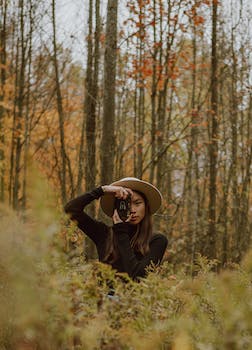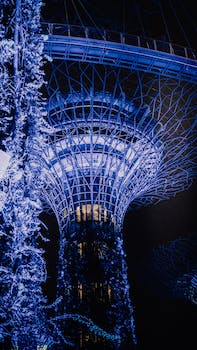

-
Table of Contents
"Unveiling the ethereal beauty of butterflies through the lens."
Introduction
Capturing the elegance of butterflies through photography is a captivating and rewarding journey. These delicate creatures, with their vibrant colors and graceful movements, have long fascinated photographers and nature enthusiasts alike. In this article, we will explore the art of butterfly photography, discussing techniques, equipment, and tips to help you embark on your own photography journey and capture the timeless beauty of these enchanting insects.
Exploring the Vibrant Colors and Patterns of Butterflies Through Photography
Butterflies have long been admired for their vibrant colors and intricate patterns. These delicate creatures, with their graceful flight and ethereal beauty, have captivated the hearts of many. For photographers, capturing the elegance of butterflies through their lenses is a rewarding and challenging journey.
Photographing butterflies requires patience, skill, and a keen eye for detail. These creatures are known for their quick movements and unpredictable flight patterns, making it difficult to capture them in a still frame. However, with the right techniques and equipment, photographers can create stunning images that showcase the vibrant colors and patterns of these enchanting insects.
One of the first challenges photographers face when photographing butterflies is finding them in their natural habitat. Butterflies are often found in gardens, meadows, and other areas with an abundance of flowers. These locations provide the perfect backdrop for capturing their vibrant colors and patterns. It is important to approach butterflies slowly and quietly, as sudden movements can startle them and cause them to fly away.
Once a butterfly has been spotted, the next step is to carefully compose the shot. Photographers must consider the lighting, background, and angle to create a visually appealing image. Natural light is often the best choice for capturing the true colors of butterflies, so shooting during the early morning or late afternoon can yield the best results. The background should be simple and uncluttered, allowing the butterfly to be the main focus of the photograph. Experimenting with different angles can also add depth and interest to the image.
To capture the intricate patterns on a butterfly's wings, photographers often use macro lenses. These lenses allow for close-up shots, revealing the smallest details that are not visible to the naked eye. By getting up close and personal with the butterfly, photographers can showcase the delicate lines, dots, and swirls that make each species unique. It is important to use a shallow depth of field to create a soft and dreamy background, while keeping the butterfly in sharp focus.
In addition to capturing the colors and patterns of butterflies, photographers can also experiment with different techniques to create artistic and abstract images. One popular technique is called "motion blur," where the photographer intentionally moves the camera while taking the shot. This creates a sense of movement and adds a dynamic element to the photograph. Another technique is to use a slow shutter speed to capture the fluttering wings of a butterfly, creating a sense of motion and energy.
Photographing butterflies is not only a way to capture their beauty, but also a way to raise awareness about their conservation. Many species of butterflies are facing threats such as habitat loss and climate change, making it crucial to protect their natural habitats. By showcasing the vibrant colors and intricate patterns of butterflies through photography, photographers can inspire others to appreciate and protect these delicate creatures.
In conclusion, capturing the elegance of butterflies through photography is a rewarding and challenging journey. Photographers must have patience, skill, and a keen eye for detail to create stunning images that showcase the vibrant colors and patterns of these enchanting insects. By carefully composing the shot, using the right equipment and techniques, and raising awareness about their conservation, photographers can capture the true beauty of butterflies and inspire others to appreciate and protect these delicate creatures.
Mastering Macro Photography Techniques to Capture the Delicate Beauty of Butterflies

Butterflies are some of the most beautiful creatures in the natural world, with their delicate wings and vibrant colors. Capturing their elegance through photography can be a rewarding and challenging journey. In order to truly capture the delicate beauty of butterflies, it is important to master macro photography techniques.
Macro photography is a specialized form of photography that focuses on capturing small subjects at close range. It allows photographers to capture intricate details that may not be visible to the naked eye. When it comes to photographing butterflies, macro photography is essential to capture the fine details of their wings and the patterns that make each species unique.
One of the first things to consider when photographing butterflies is the equipment. A macro lens is a must-have for capturing the intricate details of these creatures. A lens with a focal length of 100mm or more is ideal, as it allows for a comfortable working distance while still capturing the fine details. Additionally, a tripod can be helpful in keeping the camera steady and reducing camera shake.
Lighting is another important aspect of macro photography. Natural light is often the best choice for capturing the delicate beauty of butterflies. Early morning or late afternoon light tends to be softer and more flattering, creating a warm and ethereal glow. However, if natural light is not available or sufficient, using a diffuser or reflector can help soften harsh light and create a more even lighting situation.
Composition is key when photographing butterflies. Pay attention to the background and try to find a clean and uncluttered setting that will not distract from the main subject. Look for flowers or plants that butterflies are attracted to, as they can provide a natural and beautiful backdrop. Experiment with different angles and perspectives to create visually interesting compositions.
Patience is a virtue when it comes to photographing butterflies. These creatures are constantly in motion, making it challenging to capture them in a still moment. Take your time and observe their behavior to anticipate their movements. Be prepared to take multiple shots to increase your chances of capturing the perfect moment.
In addition to technical skills, understanding the behavior and habits of butterflies can greatly enhance your photography. Learn about the different species in your area and their preferred habitats. This knowledge can help you locate and approach butterflies without disturbing them. It can also help you anticipate their movements and capture them in their natural environment.
Post-processing is an important step in macro photography. Use editing software to enhance the colors and details of your images. Adjust the exposure, contrast, and saturation to bring out the vibrant colors of the butterflies. Be careful not to overdo it, as too much editing can make the image look unnatural.
Mastering macro photography techniques is a journey that requires practice and patience. By understanding the equipment, lighting, composition, and behavior of butterflies, you can capture their delicate beauty in stunning detail. So grab your camera, head out into nature, and embark on a photography journey to capture the elegance of butterflies.
Unveiling the Graceful Flight and Movement of Butterflies: Tips for Action Photography
Butterflies are known for their delicate beauty and graceful flight. Capturing their elegance through photography can be a rewarding and challenging journey. In this section, we will explore tips for action photography to unveil the graceful flight and movement of butterflies.
One of the key aspects of capturing the elegance of butterflies in action is understanding their behavior and flight patterns. Butterflies are often seen fluttering from flower to flower, searching for nectar. They have a unique way of flying, with their wings flapping in a rhythmic motion. Observing their flight patterns and behavior can help you anticipate their movements and capture them in action.
To capture the graceful flight of butterflies, it is important to have the right equipment. A camera with a fast shutter speed is essential to freeze their movement and capture the details of their wings. A telephoto lens can also be useful to get close-up shots without disturbing the butterflies. Additionally, a tripod can provide stability and help you maintain focus on the fast-moving subjects.
Lighting plays a crucial role in action photography. Natural light is often the best choice for capturing the elegance of butterflies. Early morning or late afternoon light provides a soft and warm glow, enhancing the colors and details of the butterflies. Avoid harsh midday sunlight, as it can create harsh shadows and wash out the colors. If shooting in low light conditions, consider using a flash or a reflector to fill in the shadows and illuminate the subject.
Patience is key when photographing butterflies in action. They are constantly on the move, making it challenging to capture the perfect shot. Spend time observing their behavior and find a spot where they frequently visit. Position yourself at a comfortable distance and wait for the right moment to press the shutter button. It may take several attempts to capture the perfect shot, but the results will be worth the effort.
Composition is another important aspect of action photography. Pay attention to the background and framing of your shots. Look for colorful flowers or foliage that can enhance the beauty of the butterflies. Experiment with different angles and perspectives to create visually appealing images. Remember to leave some empty space in the frame to give the butterflies room to move and create a sense of motion.
In post-processing, you can further enhance the elegance of butterflies. Adjust the exposure, contrast, and saturation to bring out the colors and details. Crop the image if necessary to improve the composition. However, be mindful not to over-edit and lose the natural beauty of the butterflies.
Capturing the elegance of butterflies in action photography requires a combination of technical skills, patience, and a keen eye for detail. By understanding their behavior, using the right equipment, and paying attention to lighting and composition, you can unveil the graceful flight and movement of butterflies through your photographs. So grab your camera, head out into nature, and embark on a photography journey that captures the beauty of these enchanting creatures.
Q&A
1. What equipment is recommended for capturing butterfly photographs?
A high-quality DSLR camera with a macro lens is recommended for capturing detailed and close-up shots of butterflies.
2. What are some tips for finding butterflies to photograph?
Look for butterflies in areas with abundant flowers, such as gardens, meadows, or parks. Early morning and late afternoon are the best times to find them when they are most active.
3. How can one capture the elegance of butterflies in photographs?
To capture the elegance of butterflies, focus on their intricate patterns and vibrant colors. Use a shallow depth of field to blur the background and make the butterfly stand out. Patience and a steady hand are key to capturing their delicate movements.
Conclusion
In conclusion, capturing the elegance of butterflies through photography is a captivating journey. It requires patience, skill, and a deep appreciation for the beauty of these delicate creatures. Through careful observation and understanding of their behavior, photographers can create stunning images that showcase the grace and intricacy of butterflies. The process of capturing their elegance is not only visually rewarding but also allows us to appreciate the wonders of nature and the importance of preserving these enchanting creatures for future generations.












